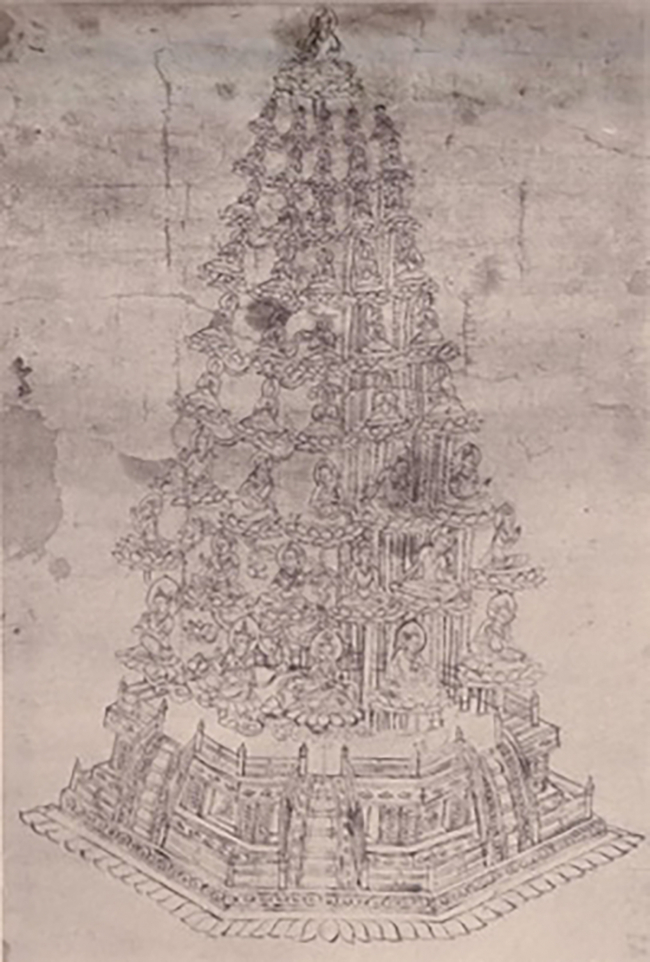VMPEA: Zhenru Zhou

"Anarchitectonic Pagoda Images from Late-medieval Dunhuang"
Speaker: Zhenru Zhou (Ph.D. candidate, Art History)
Discussant: Dr. Katherine Tsiang (Associate Director, Center for the Art of East Asia)
Among the numerous portable artifacts found at the Dunhuang Caves, some are particularly indicative of the production of the unportable art and architecture, namely, the decorated Buddhist cave-temple. While the Dunhuang artists’ sketches and stencils in general have been associated with figural representations as seen in wall paintings and mandalic designs for ceilings or altars, it remains understudied how the cave architecture has been designed, conceptualized, and implemented. In response to the question, this paper explores a curious design trend of de-emphasizing the architectonic construct of an architectural space, which is evident in portable paintings, reliquaries, mural paintings and repaintings, caves, and even cave groups in late-medieval Dunhuang. In particular, the paper juxtaposes a few little-studied drawings originally deposited in the Dunhuang Library Cave with the repainted murals that later concealed the cave to unveil the dialectic relationship between image-making and cave-making. In addition, the study of cross-media artistic practices at Dunhuang will shed new light on a paradigm shift in visualizing the Buddhist Pure Lands in northwest China of the 10-11th centuries.
Zhenru Zhou studies Buddhist art and architecture in China and along the Silk Roads, with a focus on cave-temples in Northwest China. She received an M. Arch degree from Princeton University in 2016, and another M. Arch and a B. Arch degree from Tsinghua University (China). Her dissertation project, titled “Between the Virtual and the Real: A New Architecture of the Mogao Caves (Dunhuang, China) in 781-1036 CE,” explores the complexity of cave architecture regarding its hybrid materiality and visuality, construction and reconstruction over time.
Katherine R. Tsiang is a scholar of Chinese art of the Medieval Period, a period of extensive multicultural interaction during which the northern part of China was controlled predominantly by non-Han Chinese rulers and Buddhism, initially introduced from India and Central Asia, became the predominant religion. Her recent research has focused on the art and visual culture of Chinese tombs and Buddhist cave shrines and deals with the transformative impact of multicultural, social, religious, and funerary ideologies on artistic production of the fifth through eighth centuries.
Please click here to register.
Image: Picture of Many Sons Pagoda, ink on paper, 41.6 x 28 cm, 9th-10th century CE. Deposited in Mogao Cave 17, Dunhuang, China, now in the National Museum, New Delhi, India.